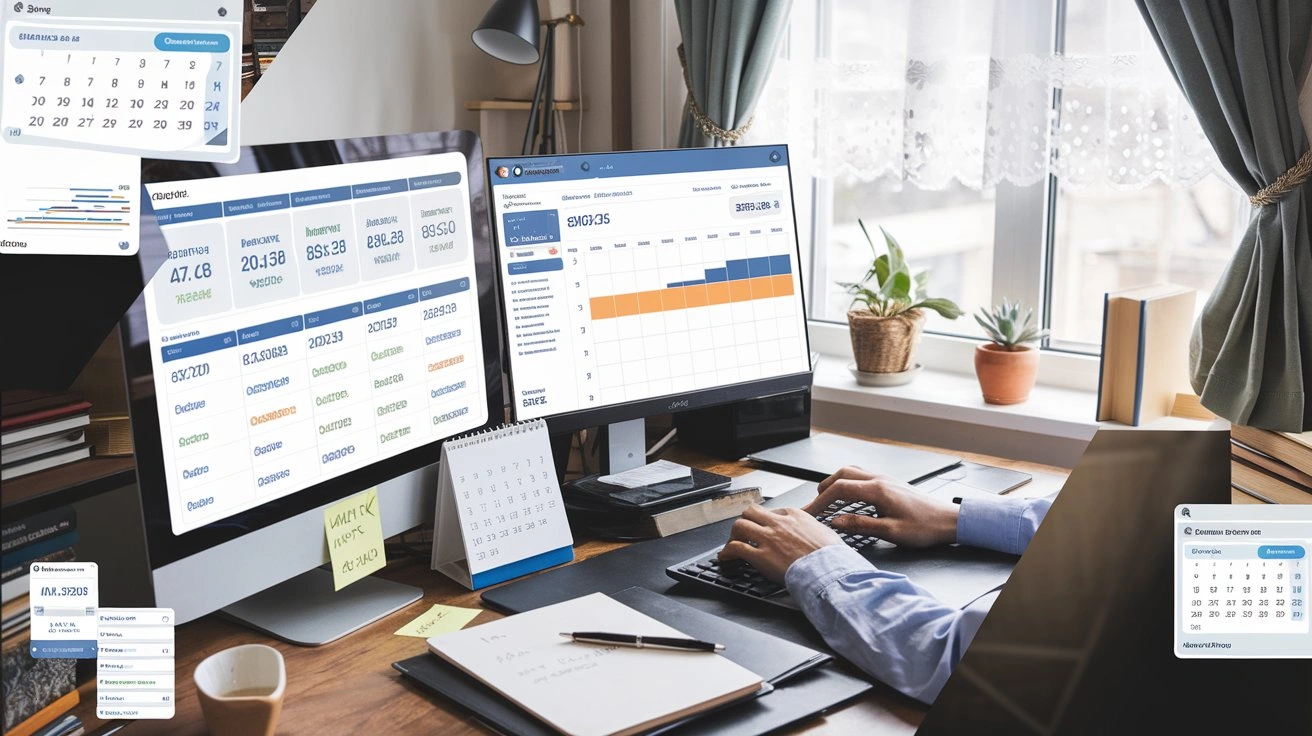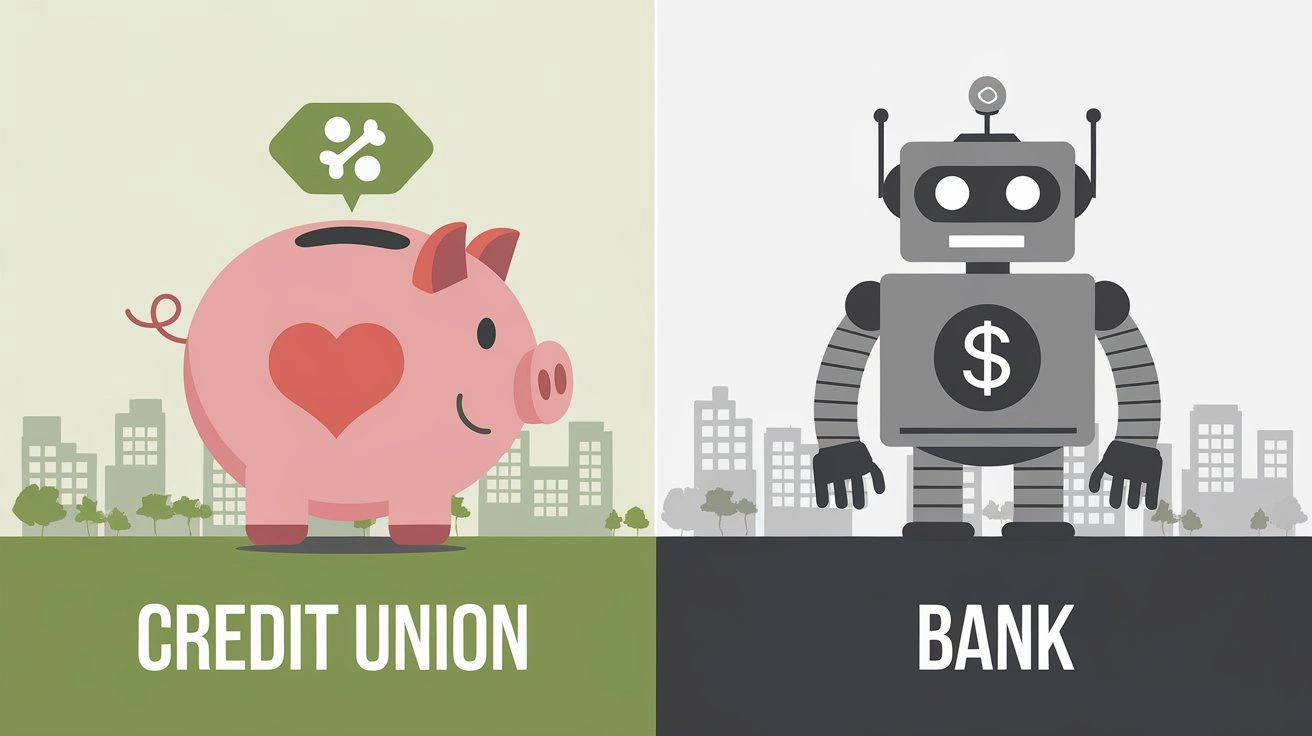How To Get Rid Of Bankruptcy On Credit Report?
Understanding how to remove bankruptcy from your credit report is a crucial step towards rebuilding your financial future. This comprehensive guide will demystify the process, offering actionable strategies and insights to help you navigate this complex terrain and improve your creditworthiness.
Understanding How Bankruptcy Affects Your Credit Report
Bankruptcy is a legal process designed to help individuals and businesses who can no longer repay their debts. While it offers a fresh start, its impact on your credit report is significant and long-lasting. When you file for bankruptcy, it's reported to the major credit bureaus: Equifax, Experian, and TransUnion. This notation serves as a major red flag to lenders, indicating a history of financial distress. The type of bankruptcy filed also plays a role in how it's perceived and how long it remains on your report.
Types of Personal Bankruptcy
The two most common types of personal bankruptcy are Chapter 7 and Chapter 13. Each has distinct implications for your credit report and financial recovery.
Chapter 7 Bankruptcy
Chapter 7, often referred to as liquidation bankruptcy, involves selling off non-exempt assets to pay creditors. It's generally for individuals with lower incomes who can't afford to repay their debts. A Chapter 7 bankruptcy typically stays on your credit report for up to 10 years from the filing date.
Chapter 13 Bankruptcy
Chapter 13, also known as a wage earner's plan, involves a repayment plan where you pay back a portion of your debts over a period of three to five years. This type of bankruptcy remains on your credit report for up to 7 years from the filing date. While it may seem longer than Chapter 7, successfully completing a Chapter 13 plan can sometimes be viewed more favorably by future lenders as it demonstrates a commitment to repayment.
The Impact on Your Credit Score
Filing for bankruptcy is one of the most damaging events for a credit score. It can cause a significant drop, often by 100-200 points or more, depending on your score before the filing. This is because bankruptcy signifies a high risk to lenders. The presence of a bankruptcy on your report will also make it harder to obtain new credit, and when you do, interest rates are likely to be considerably higher.
Why Lenders Care
Lenders use credit reports to assess the risk associated with lending money. A bankruptcy indicates a past inability to manage debt, making you a higher risk for default. This is why it's a prominent factor in their lending decisions. Understanding this impact is the first step in strategizing how to mitigate its effects.
The Myth of Immediate Bankruptcy Removal
A common misconception is that bankruptcy can be removed from a credit report immediately after filing or shortly thereafter. This is largely untrue. The Fair Credit Reporting Act (FCRA) sets specific time limits for how long accurate negative information, including bankruptcies, can remain on your credit report. There is no legal mechanism to simply "remove" a bankruptcy that is accurately reported and within its statutory reporting period.
Debunking Common Misconceptions
Many services and individuals claim they can remove bankruptcies from credit reports quickly and easily. These are often scams or involve exploiting legitimate credit repair processes in misleading ways. It's crucial to be wary of any entity that guarantees the immediate removal of a bankruptcy, especially if they ask for upfront fees for such a promise. Legitimate credit repair involves diligence, patience, and adherence to legal frameworks, not quick fixes.
Legitimate Avenues for Improvement
While you cannot magically erase an accurate bankruptcy, you can take steps to improve your credit standing and minimize its negative impact over time. This involves ensuring the information on your report is accurate and focusing on building positive credit history. The goal is not to remove the bankruptcy prematurely but to outshine its negative influence with consistent, responsible financial behavior.
The Role of Credit Bureaus
The credit bureaus are responsible for collecting and reporting credit information. They receive data from lenders and public records. If a bankruptcy is accurately reported, it will remain on your report for the duration stipulated by the FCRA. Their role is to maintain accurate credit histories, not to prematurely remove valid negative information.
Legal Timeframes for Bankruptcy on Credit Reports
The Fair Credit Reporting Act (FCRA) dictates the maximum period for which negative information can be reported on a credit report. This legislation is the cornerstone of understanding how long a bankruptcy will affect your creditworthiness.
FCRA Reporting Limits
Under the FCRA, the standard reporting period for a Chapter 7 bankruptcy is 10 years from the date of filing. For a Chapter 13 bankruptcy, it's 7 years from the date of filing. It's important to note that these are maximums. Some bankruptcies might fall off slightly earlier if the credit bureau's reporting system updates cycle in a way that removes them upon reaching their statutory limit.
When Does the Clock Start?
The clock for these reporting periods begins on the date you file for bankruptcy. For example, if you filed for Chapter 7 bankruptcy on January 15, 2020, it would, in most cases, remain on your credit report until January 15, 2030. Similarly, a Chapter 13 filed on March 10, 2018, would typically be removed around March 10, 2025.
Exceptions and Nuances
While the FCRA provides clear guidelines, there can be nuances. For instance, if a bankruptcy is dismissed rather than discharged, the reporting period may start from the dismissal date. Also, if a bankruptcy is used to discharge debts that are later re-litigated or if there are subsequent legal actions related to the bankruptcy, this could potentially affect reporting timelines, though this is rare and complex.
The Importance of Accuracy
The crucial point is that these timeframes apply to *accurate* reporting. If a bankruptcy is reported beyond these legal limits, or if details about the bankruptcy are incorrect, then it is eligible for dispute and removal. This is where legitimate credit repair efforts can focus.
2025 Statistics on Bankruptcy Impact
As of 2025, the impact of bankruptcy on credit scores remains one of the most severe. Studies indicate that individuals with a recent bankruptcy on their report typically have credit scores that are 100-200 points lower than those with no negative credit history. The average credit score for someone with a Chapter 7 bankruptcy within the last 5 years is often in the low 500s, while those with a Chapter 13 may see scores in the mid-500s. Lenders continue to be highly cautious, with approval rates for mortgages and auto loans significantly lower for individuals with bankruptcies on their record within the last 7-10 years.
Disputing Errors on Your Credit Report
While you cannot remove an accurate bankruptcy within its reporting period, you absolutely have the right to dispute any inaccuracies or fraudulent information on your credit report. This is a fundamental consumer protection under the FCRA. If a bankruptcy is reported incorrectly, or if it's listed for longer than legally permitted, you can and should dispute it.
What Constitutes an Error?
Errors on a credit report can include:
- A bankruptcy listed for longer than the FCRA-mandated period (10 years for Chapter 7, 7 years for Chapter 13).
- A bankruptcy that was dismissed or discharged but is still listed as active.
- A bankruptcy that belongs to someone else with a similar name.
- Incorrect dates associated with the bankruptcy filing or discharge.
- Debts listed as unpaid or outstanding when they were discharged in bankruptcy.
- Accounts that were included in bankruptcy but are still being reported as active or delinquent by the original creditor.
The Dispute Process: Step-by-Step
Disputing an error with the credit bureaus is a formal process. Here’s how to do it effectively:
- Obtain Your Credit Reports: Get free copies of your credit reports from all three major bureaus (Equifax, Experian, TransUnion) at AnnualCreditReport.com.
- Identify the Inaccuracy: Carefully review each report for any errors related to your bankruptcy.
- Gather Supporting Documentation: Collect any evidence that proves the inaccuracy. This could include court documents showing the dismissal or discharge date, proof of identity if the bankruptcy is not yours, or statements from your bankruptcy attorney.
- Write a Dispute Letter: Draft a formal dispute letter to the credit bureau reporting the error. Be clear, concise, and specific about the inaccuracy. Include your personal information (name, address, Social Security number), the account number or item in question, and the reason for the dispute. Attach copies (never originals) of your supporting documentation.
- Send the Letter: Send your letter via certified mail with a return receipt requested. This provides proof that the credit bureau received your dispute. You can also initiate disputes online through the credit bureaus' websites, but a written letter is often more thorough and provides better documentation.
- Credit Bureau Investigation: The credit bureau has 30 days (or 45 days if you submit additional information during the 30-day period) to investigate your dispute. They must contact the furnisher of the information (e.g., the court or the original creditor) to verify its accuracy.
- Resolution: If the investigation finds the information to be inaccurate, the credit bureau must correct or remove it. They will send you an updated credit report. If they find the information to be accurate, they will notify you of their findings.
Disputing with the Creditor/Furnisher
In addition to disputing with the credit bureaus, you can also dispute directly with the creditor or entity that provided the inaccurate information to the bureaus (the "furnisher"). This is also a right granted by the FCRA. If the furnisher cannot verify the information, they must notify the credit bureaus to correct or remove it.
When to Consider Professional Help
If you find the dispute process overwhelming or if your disputes are repeatedly ignored or rejected, you might consider hiring a reputable credit repair company. Ensure they are licensed and bonded in your state and understand their fee structure. Be wary of companies that charge high upfront fees or guarantee results.
Strategies for Rebuilding Credit After Bankruptcy
Once you've addressed any errors and accepted that the bankruptcy will remain on your report for its legal duration, the focus shifts to rebuilding your credit. This is a marathon, not a sprint, and requires consistent, responsible financial habits. The goal is to demonstrate to future lenders that you are now a reliable borrower.
1. Secure a Secured Credit Card
A secured credit card is one of the most effective tools for rebuilding credit after bankruptcy. You provide a cash deposit, which then becomes your credit limit. This significantly reduces the risk for the issuer, making approval easier. Use the card responsibly by making small purchases and paying the balance in full and on time each month. This positive payment history will be reported to the credit bureaus.
Example: A $300 deposit on a secured card will likely give you a $300 credit limit. Using $50 of that limit and paying it off before the due date establishes a positive payment history.
2. Become an Authorized User
If you have a trusted friend or family member with excellent credit, ask them to add you as an authorized user on one of their credit cards. Their positive payment history on that account can then appear on your credit report, potentially boosting your score. However, ensure the primary cardholder uses the card responsibly, as their mistakes could also negatively affect you.
3. Consider a Credit-Builder Loan
A credit-builder loan is a small loan where the borrowed amount is held in a savings account by the lender and released to you after you've paid off the loan. Your payments are reported to the credit bureaus, helping to establish a positive payment history. These are often offered by credit unions and community banks.
4. Manage New Credit Wisely
When you do get approved for new credit (like an unsecured card after a period of responsible secured card use), use it sparingly and always pay on time. Keep your credit utilization low (ideally below 30% of your credit limit). Multiple new credit accounts opened at once can sometimes negatively impact your score.
5. Pay All Bills On Time, Every Time
Payment history is the most significant factor in your credit score. Even bills that aren't traditionally reported to credit bureaus (like rent or utilities) can sometimes be reported through specialized services. Prioritize paying all your financial obligations on time, without exception. This includes any post-bankruptcy debts or obligations.
6. Monitor Your Credit Reports Regularly
Continue to obtain your free credit reports annually and monitor them for any new errors or signs of identity theft. Staying vigilant ensures that your rebuilding efforts are not undermined by unexpected issues.
7. Patience and Consistency
Rebuilding credit after bankruptcy takes time. It's crucial to be patient and consistently practice good financial habits. The positive information you build will gradually outweigh the negative impact of the bankruptcy as it ages and eventually falls off your report.
Comparison: Credit Rebuilding Strategies
| Strategy | Pros | Cons | Best For |
|---|---|---|---|
| Secured Credit Card | Easier approval, builds payment history, relatively low risk. | Requires a security deposit, may have lower limits and higher fees. | Individuals with very low credit scores or no credit history post-bankruptcy. |
| Authorized User | Can quickly add positive history, no deposit required. | Depends on primary user's credit habits, potential for negative impact. | Individuals with trusted, creditworthy contacts. |
| Credit-Builder Loan | Establishes payment history, builds savings. | Funds are inaccessible during the loan term, requires consistent payments. | Individuals who want a structured way to build credit and save. |
2025 Outlook on Credit Rebuilding
In 2025, lenders are increasingly using sophisticated algorithms that consider a broader range of data beyond traditional credit scores. While a bankruptcy remains a significant hurdle, lenders are also looking at the length of time since the bankruptcy, the applicant's current payment history, and credit utilization. Demonstrating consistent positive behavior for 2-3 years post-bankruptcy can significantly improve approval odds and terms for new credit. Some "buy here, pay here" auto dealerships and subprime lenders may offer options sooner, but with very high interest rates. The focus remains on demonstrating reliability through consistent on-time payments and low credit utilization.
Preventing Future Credit Report Issues
The lessons learned from bankruptcy should serve as a foundation for a more secure financial future. Proactive financial management is key to preventing future credit report problems and maintaining a healthy credit profile.
Budgeting and Financial Planning
Create and stick to a realistic budget. Track your income and expenses diligently. Understanding where your money goes is the first step to controlling it. Allocate funds for essential bills, savings, and discretionary spending. A well-managed budget prevents overspending and the accumulation of unmanageable debt.
Emergency Fund
Build an emergency fund to cover unexpected expenses like medical bills, job loss, or car repairs. Aim to save at least 3-6 months of living expenses. This fund acts as a buffer, preventing you from relying on credit cards or loans when financial emergencies arise.
Debt Management Strategies
If you do incur debt, have a plan for repayment. Prioritize high-interest debts. Consider the debt snowball or debt avalanche methods. Avoid taking on more debt than you can reasonably repay. If you're struggling, seek advice from a non-profit credit counseling agency.
Regular Financial Check-ups
Schedule regular "financial check-ups" for yourself, perhaps quarterly or semi-annually. Review your budget, savings, and debt repayment progress. Adjust your financial plan as needed based on changes in your income, expenses, or financial goals.
Educate Yourself Continuously
Financial literacy is an ongoing process. Stay informed about personal finance, credit management, and economic trends. Resources like reputable financial websites, books, and workshops can provide valuable knowledge.
Set Realistic Financial Goals
Having clear, achievable financial goals (e.g., saving for a down payment, paying off a car loan) provides motivation and direction for your financial efforts. Break down large goals into smaller, manageable steps.
The Long-Term View
Remember that your credit report is a snapshot of your financial behavior over time. Consistent, responsible actions will, over the years, build a positive history that will eventually overshadow the negative impact of past events like bankruptcy. The key is to maintain discipline and a long-term perspective.
2025 Trends in Consumer Credit Protection
As of 2025, consumer credit protection laws continue to evolve. The CFPB (Consumer Financial Protection Bureau) is actively monitoring credit reporting agencies and furnishers for compliance with FCRA. There's an increased emphasis on transparency in credit scoring models and dispute resolution processes. Consumers are becoming more aware of their rights, leading to a higher volume of disputes. Lenders are also using more alternative data in their assessments, but traditional credit reports and the impact of significant negative events like bankruptcy remain highly influential. Staying informed about these trends can empower consumers to better protect their financial information and rights.
In conclusion, while you cannot directly "get rid of" an accurate bankruptcy from your credit report before its legal reporting period expires, you possess significant power to influence your financial future. By understanding the legal timeframes, diligently disputing any inaccuracies, and implementing robust credit rebuilding strategies, you can effectively mitigate the long-term impact of bankruptcy. Patience, consistency, and a commitment to sound financial practices are your greatest allies in this journey towards a stronger credit profile and greater financial freedom.
Related Stories
Recent Posts
How Long Do Hard Inquiries Stay on Your Credit Report?
Does ZIP Code Affect Your Credit Score? Facts vs Myths Explained
How to Choose a Credit Repair Company in 2026
Does Closing a Checking Account Affect Your Credit Score? Here’s the Truth
Is a Home Equity Loan a Second Mortgage? The Definitive 2025 Guide


